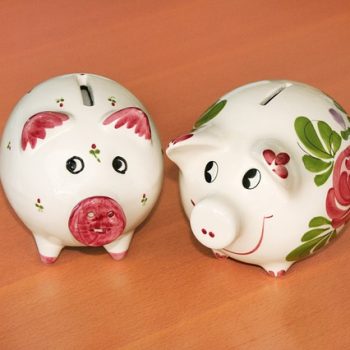1. If feeding fresh foods, buy a freezer so you can store meats purchased on sale. Don’t skimp on the freezer. The older ones use up much more energy and your electric bill will increase dramatically. That doesn’t mean you need a brand new freezer though. Know the energy rating on whatever you buy and make the decision based on that. You may not need a very large freezer, or you may find that it’s an added plus for your human family too. Either way, think about looking at those dented or scratched freezers that stores put on sale now and then. Unless you’re planning on putting it on display, who really cares what the exterior looks like?
2. Don’t throw out your over ripened fruit, the tops of celery stalks, cabbage cores, etc. Use these to make a veggie mush for raw diets, or add them to a cooked diet. Dogs are scavengers. There’s nothing wrong with feeding them these foods. In fact, they can be healthy additions. No grapes. They’re toxic to dogs.
3. Look at the “last day” veggies and fruits (no grapes – they’re toxic to dogs) that your grocery store offers. These items may not look as pretty, but they’re just fine for your dog. Obviously, rotting produce shouldn’t be fed, but over ripened produce is fine and can cost half the price if not less. Cook or pulverize these into veggie mush and freeze right away.
4. Don’t discard vegetable peelings. There’s a lot of nutrition going into the garbage otherwise. Use well scrubbed peels as part of your vegetable mixture. Whirl these through a food processor or juicer. No onions, or garlic since they can be toxic to dogs.
5. Grind your own meats and vegetables. Pre-made frozen raw diets are convenient but some are very expensive. The cost of a grinder is offset by the savings you’ll see when making your own food, and you take better control over what goes into it too.
6. Check your area for raw food co-ops even if you feed a cooked diet These places are geared toward raw feeders but they also have bulk buying option for meats only, and some offer canned fish and eggs as well.
7. Freeze your dog’s meals in containers that can be washed and reused. There’s no need to spend money on freezer bags, and you’ve just helped the planet a little too.
8. Buy more supplements at one time. You’ll save on shipping, or gas to the store. Simply consider how much you’ll need over a 3-6 month period, check the expiry dates on your chosen products, and purchase thoughtfully. Don’t skimp on quality, or you’ll see that an inferior product ends up costing your dog and your pocket book in the long run.
9. Chicken is usually less expensive than red meats. It also offers a poorer profile of vitamins and minerals. However, you may find that by doing the math to calculate your dog’s requirements vs. what a diet provides, that some chicken (or turkey) is a good fit.
10. Bake your own dog cookies. You take control over ingredients, save money, and your dog will love them.

